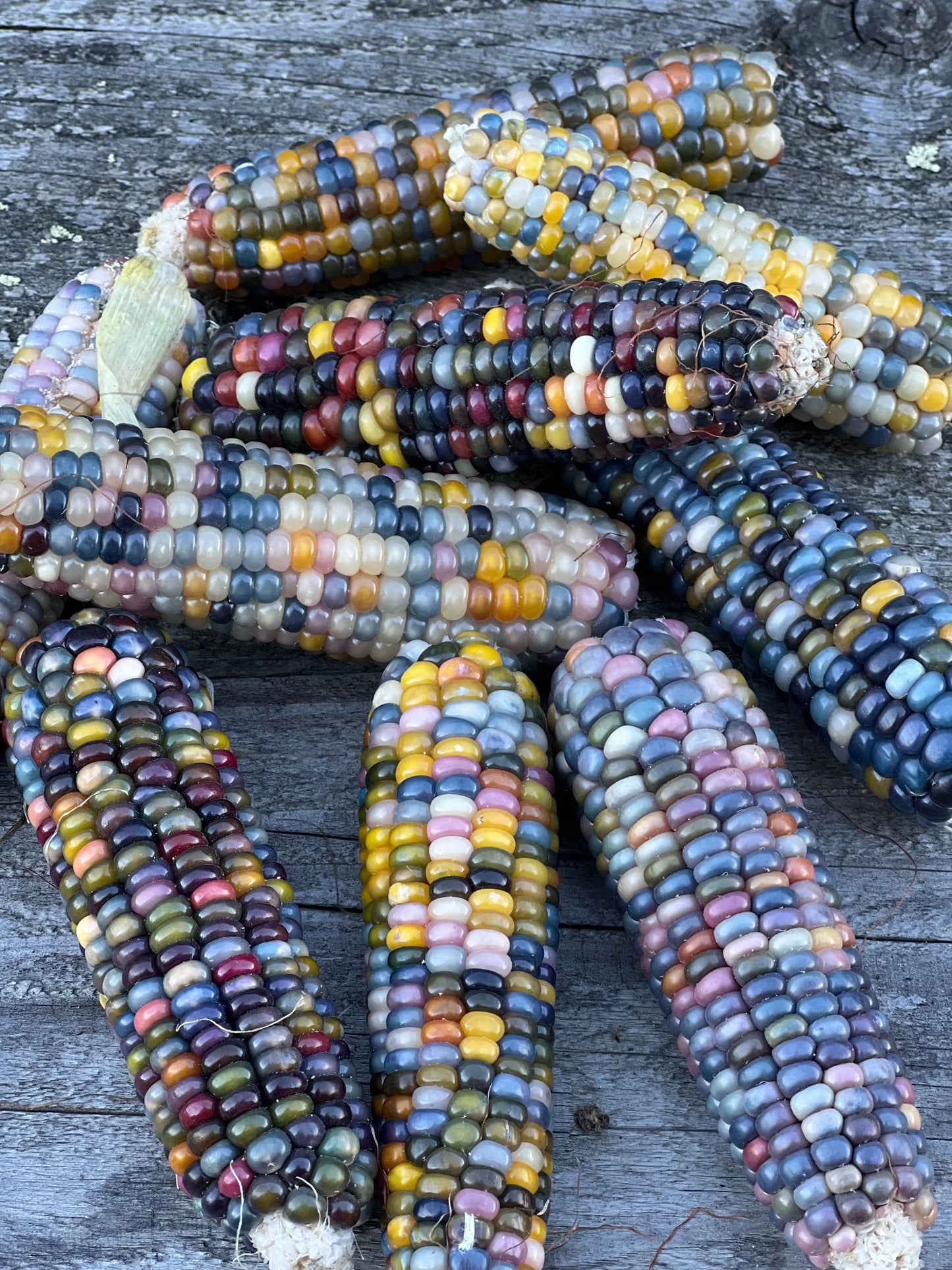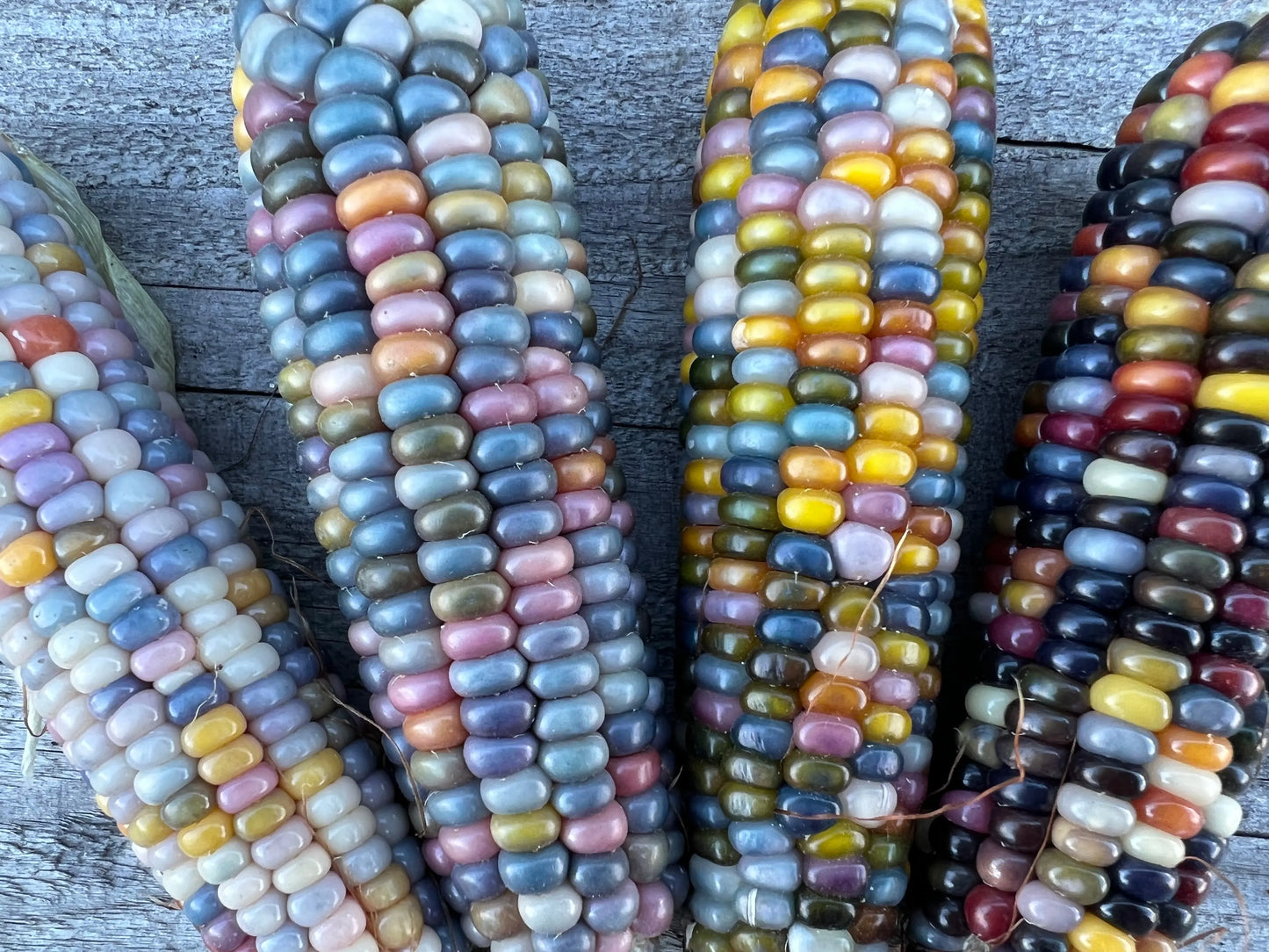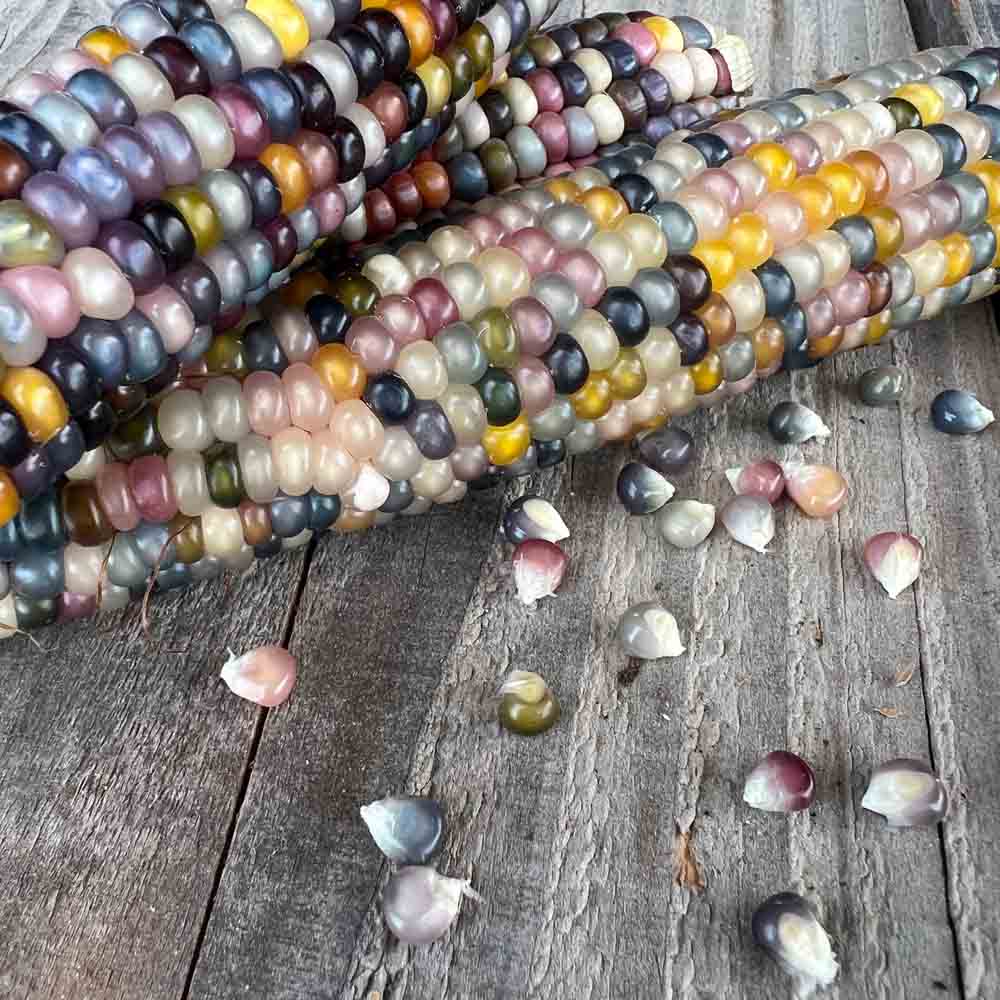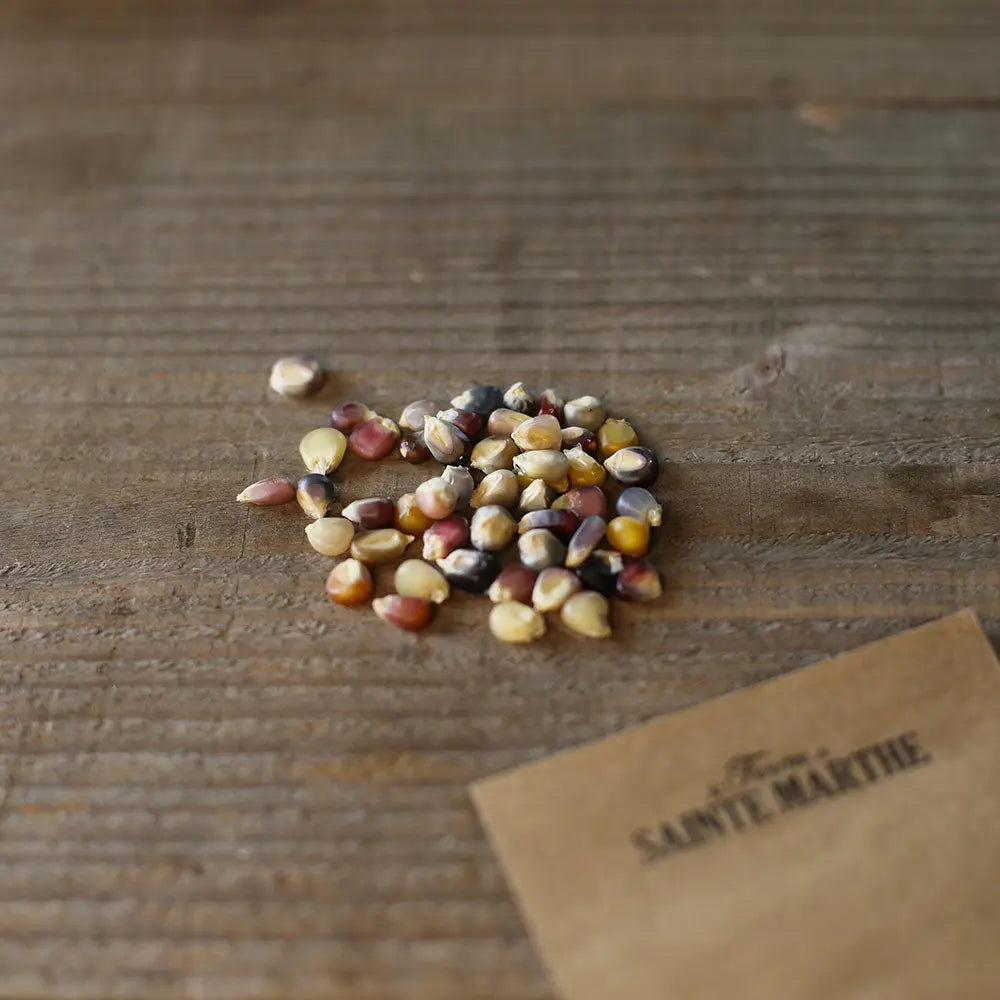GLASS GEM AB POP CORN
Zea mays
A variety originating from the USA, selected by a farmer Carl Barnes, whose grains with multiple colors and translucent reflections are reminiscent of real precious stones.
A descendant of Cherokee, this Oklahoma farmer wanted to grow corn in the late 1980s to get closer to his roots. It was by crossing three other varieties of corn that he is said to have succeeded in creating his famous "rainbow corn" or "glass gem." Nearing the end of his life, Barnes, in his eighties, gave his precious seed collection to Greg Schoen, who then entrusted it, in 2010, to the Seed Savers Network, Native Seeds.
This variety has become a symbol of diversity and heritage even though corn is one of the species that has been most selected and genetically impoverished in its history for intensive and productive agriculture.
This glass gem corn can be made into flour or popped into popcorn. The ears measure approximately 8 to 20 cm. The plants reach approximately 1.8 m, but with good watering, the crop can reach 2.7 m. The cycle is approximately 110 to 120 days after planting. Harvest when the husk around the ear is dry and brown; the kernels will then be an intense, translucent color.
Successful corn sowing
Sow in May, in a sunny, sheltered location, 3 to 4 seeds per hole 40 cm apart, in rows 70 cm apart. Leave only the best-looking plant, hill up the plants when they reach 15 to 20 cm in height. Watering.
Tip: combine corn and beans!
Many savvy gardeners grow their beans on corn plants. Corn grows tall, straight, and firmly anchored to the ground. Pole beans, as well as pickling cucumbers and gherkins, will find it a faithful ally for growing smoothly to the tops.













